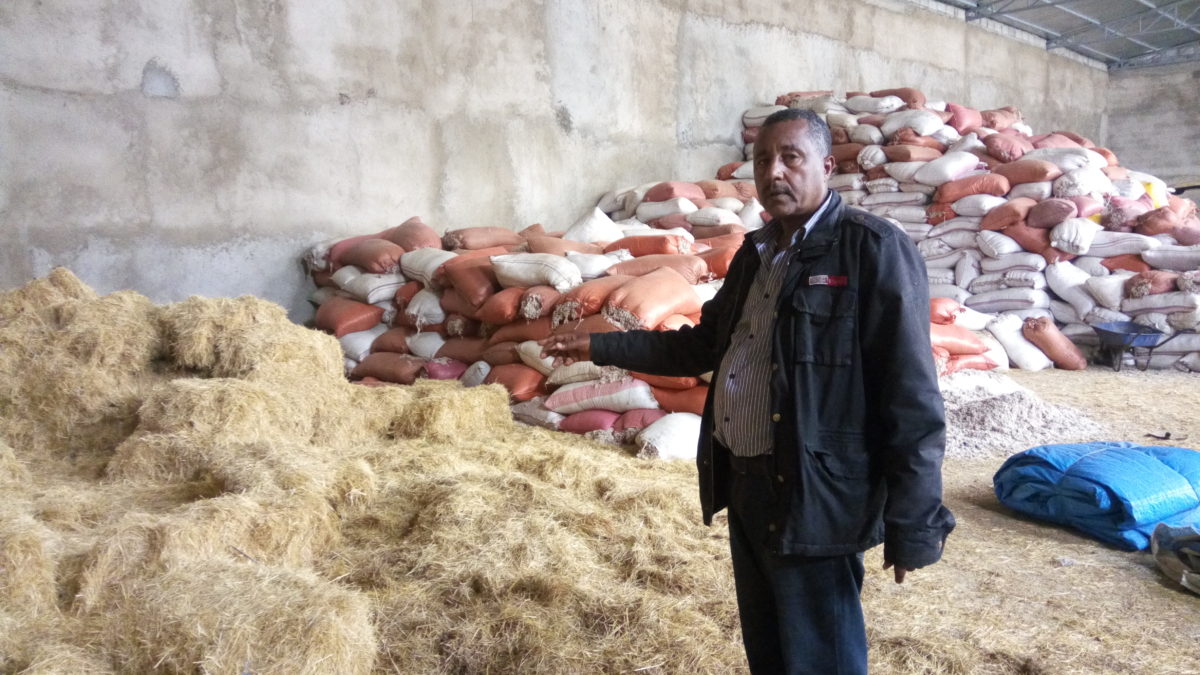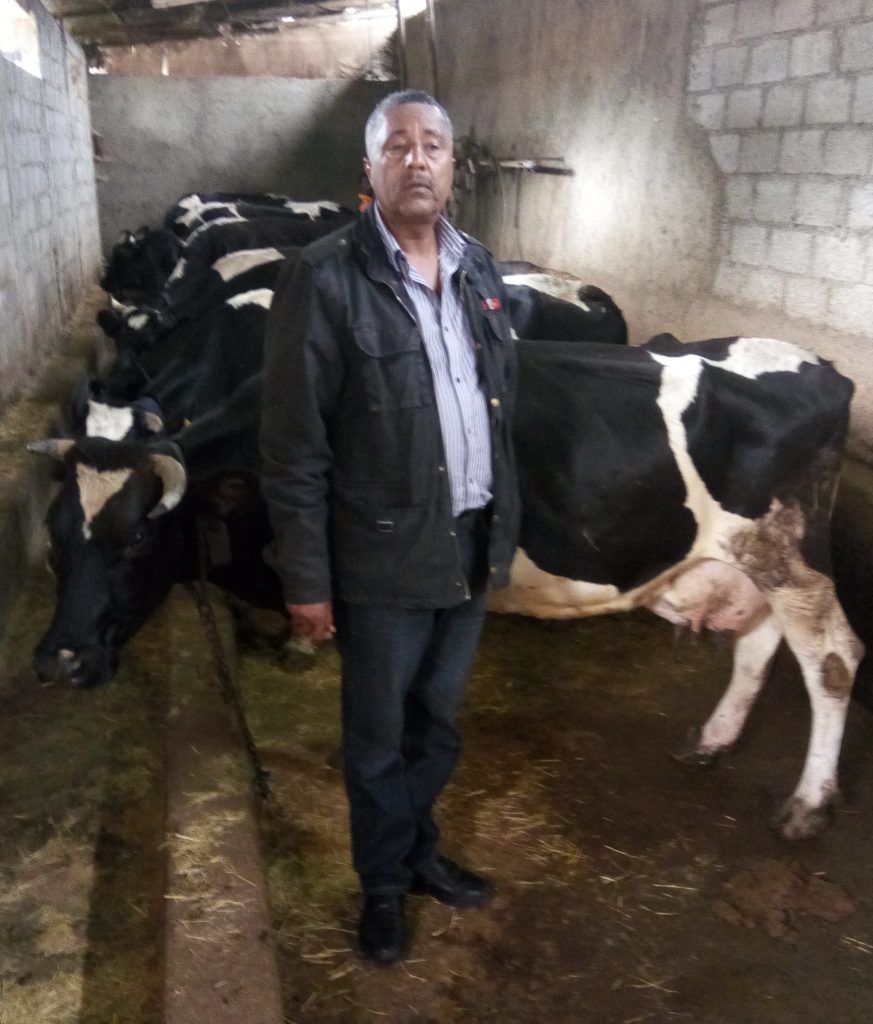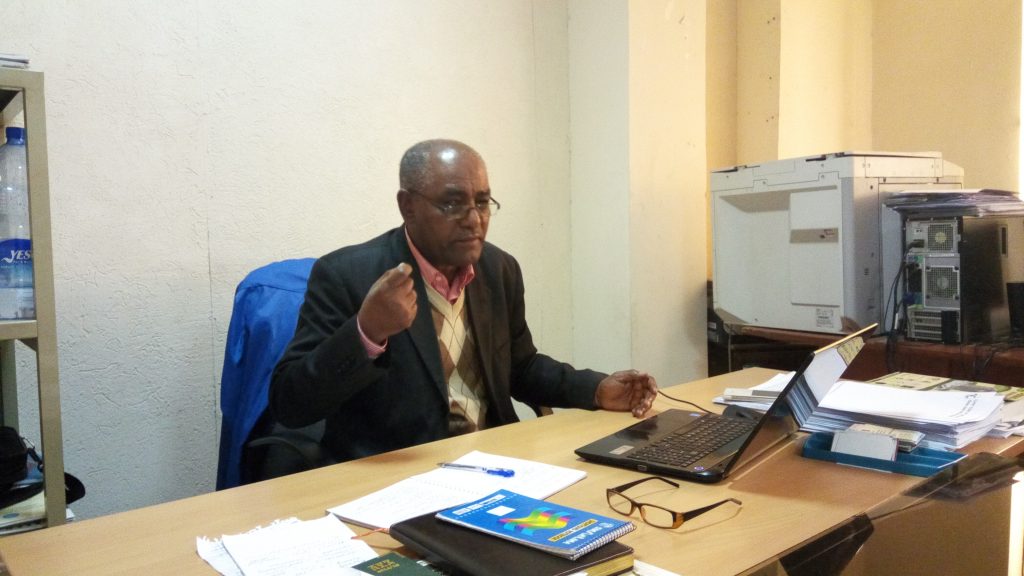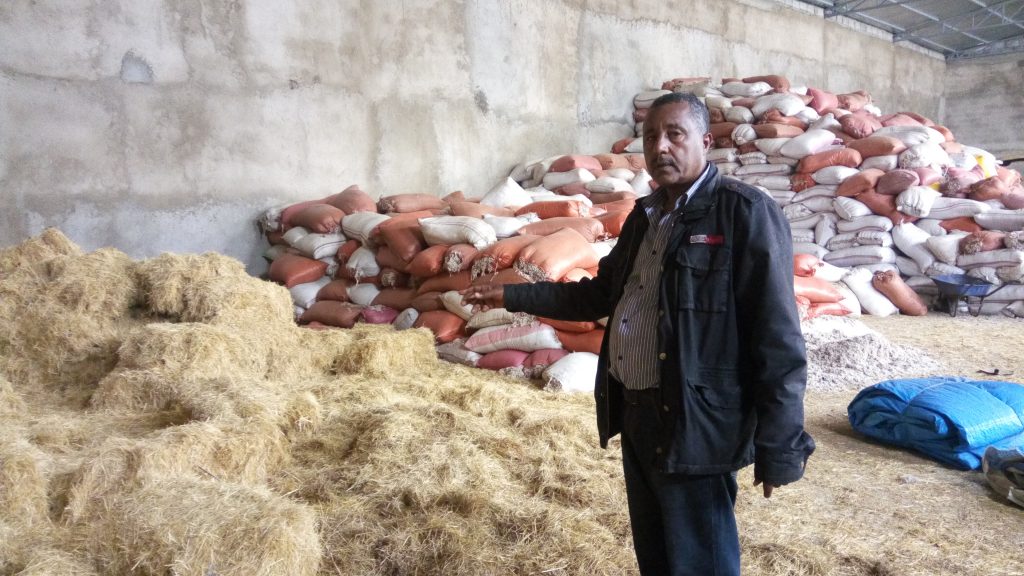
“We can achieve change only by promoting innovative ways to learn, reflect, and work together”
“I see mindset shifts being promoted by CDAIS says Gemechu Nemie, director of the Ethiopian Animal Feed Industry Association (EAFIA) and a key member of the livestock feed safety and quality innovation niche. And this is the sort of change that the CDAIS project is beginning to engender, as partners start to implement approaches that better promote innovation in agriculture, by inspiring small and simple personal revolutions… Ethiopia is one of eight CDAIS pilot countries, and within each, several ‘niches’ or ‘innovation partnerships’ have been selected. Here we see how one small step in one country is already making waves
“Milk is vital for a healthy society – and I now see a brighter future through new innovation thinking” says Tsegay Teklemariam, a dairy farmer in Goro on the outskirts of Addis Ababa. “And it is clear that to do so, we must develop on-farm feed production, and link with banks so we can access loans for investment”. He was recommended by the Ethiopian Ministry of Livestock and Fisheries to play a part in the new CDAIS programme because he sees the need to transform the dairy sector, is very happy to share his skills and experience, to learn from others, and to work together to achieve change. But he adds that “We also need to set up an information-sharing mechanism, and to have continuous training and follow up. There is much to do…”
 “I have been a dairy farmer since 2007 and now have 60 cattle. But the high cost and poor quality of animal feed, along with lack of attention or support, seriously hampers development of this sector.”
“I have been a dairy farmer since 2007 and now have 60 cattle. But the high cost and poor quality of animal feed, along with lack of attention or support, seriously hampers development of this sector.”
“I believe that we can, and will, make an impact.” Tsegay Teklemariam, dairy farmer, Addis Ababa, Ethiopia
Livestock – an essential national resource
Ethiopia has more livestock than any other country in Africa. The sales of meat, milk and other animal products from 57 million cattle, 29 million sheep, 29 million goats, 7 million donkeys, 2 million horses, a million camels and half a million mules make up one quarter of national GDP, 45% of agricultural GDP, and provide for 16% of foreign earnings from the export of live animals, hides and skins. In addition, but more difficult to measure, is the work these animals provide, for ploughing, threshing and transporting farmers, families and farm products to market and bringing back domestic needs.
From challenges to solutions
But, the livestock sector could contribute much more to the national economy. Animal diseases, poor quality breeding stock and feed all contribute to reduced production and sales. In response, the Ministry of Livestock and Fisheries has a vision and strategy of what can and needs to be done to develop the sector. Built on solid facts, realistic targets and priority interventions, CDAIS partners are actively supporting this, and in new and innovative ways.
Research findings on the contamination of feeds by aflatoxin published by International Livestock Research Institute (ILRI) scientists in 2015, prompted professionals and the feed industry to look more closely at the causes and control methods. Consequently, CDAIS partners helped to establish the ‘feed safety and quality innovation niche partnership’ under the auspices of a task force of the Veterinary Drug and Feed Administration and Control Authority (VDFACA). This would lead the overcoming of identified problems and ensure feed safety and quality along supply chains, with members including a wide range of stakeholders representing government ministries and authorities (including VDFACA), farmers, traders, the Ethiopian Animal Feed Industry Association and Ethiopian Poultry Producers and Processors Association, amongst others.
CDAIS capacity needs assessments
The ‘capacity needs assessment’ for the livestock feed safety and quality innovation niche partnership took place over three days, on 28-30 March 2017. It involved the active and intense input of 14 key stakeholders, including farmers and feed traders, facilitators and policy makers. It introduced new concepts and tools such as the ‘problem and solution tree’ and the ‘netmap’, opening participants’ eyes to different ways of seeing issues and identifying the most effective ways forward. As part of the CDAIS project, the same depth of analysis is being undertaken with every innovation niche partnership in every pilot country – some 32 in total – yielding valuable changes around the world

 Participants at the CDAIS training and assessment workshop learnt how to use new tools and work together to prioritise problems and clearly identify possible solutions
Participants at the CDAIS training and assessment workshop learnt how to use new tools and work together to prioritise problems and clearly identify possible solutions
Key sector needs
After three days of intense discussion, solutions were identified and proposed that would overcome challenges to meeting the quality, safety and adequacy of livestock inputs in the livestock sector. And the presence of aflatoxins was confirmed as a particular and increasing issue to the milk industry, for example. This niche partnership together agreed to develop legal framework and guidelines on feed risk assessments, risk management and risk communication. During the process, stakeholders analysed causes and effects around the poor feed safety and quality, and developed a detailed assessment of the causes and possible solutions. Thanks to the use of new tools introduced, they also proposed a plan of action that would lead to definite impacts in the short to medium term.
A farmer reflects…
“The CDAIS training helped me to gain new knowledge on feed safety and quality issues,” the dairy farmer Tsegay Teklemariam pointed out, five months after attending the capacity needs assessment. He spoke from his milk parlour on how those few days had changed his way of thinking: “We all talked together about the history of the problem, the impacts of poor feed quality, aflatoxin concerns, possible solutions, and new global issues regarding feed safety. And thanks to the training, I came to understand the concept and benefits of agricultural innovation systems by using new ideas, how to identify challenges and solutions, and how to reach an actual action plan through working with others”. Tsegay explained that “The visioning tool was especially educational. I tried to implement it in my own activities, and envisioned going into the milk and feed processing business in the future. It helped to give me a clear direction.” Thanks to CDAIS, change is happening.
The bigger picture
A key stakeholder, the Ethiopian Animal Feed Industry Association (EAFIA), was established by feed factory owners, private dairy farmers and feed manufacturing cooperatives in 2008. It is a not-for-profit, non-political, democratic, voluntary and secular organization legally registered with the Federal Ministry of Justice. EAFIA’s vision is to improve the productivity and profitability of members and contribute to the development of Ethiopia’s livestock feed industry. From the vantage point that the EAFIA offers, its director Gemechu Nemie adds that the capacity need assessment workshop and the coaching plan and monitoring evaluation learning workshop that followed also had many other positive impacts.

“Above and beyond, I have realized the importance of the new tools we learnt, and how they stimulated thinking on how best to approach feed safety and quality issues. I drew essential lessons from this, and feel that I have new skills. Thanks to CDAIS for enabling joint learning, new uses of knowledge and for creating an enabling environment for interaction. This has also inspired other members to develop legal frameworks and guidelines for risk assessment, risk management and risk communication to build a vibrant legal feed safety and assurance system. The intended legal framework will assist Ethiopia to meet international requirements, ensure human health, build consumer confidence in animal product, and legalize the often informal animal feed business.”
“CDAIS is playing a paramount role in addressing the lacking legal framework for risk assessment, risk management and risk communication in the country.” Gemechu Nemie, director of the Ethiopian Animal Feed Industry Association (EAFIA)
What does the future hold?
“The CDAIS workshops had important impacts on my thinking. I recognised marked changes” say Gemecho Nemia, “and particularly in how to innovate. Using skills gained from CDAIS, Gemechu is planning to conduct a similar capacity needs assessment survey of his own organisation to support the preparation of a five-year action plan. “I want to share knowledge and the skills gained from CDAIS.” To do so, he wants that the project offers well documented tools and best practices, along with experiences from the many different workshops, as “these could help convince others to follow the ‘agricultural innovation systems’ as the obvious way forward.”

